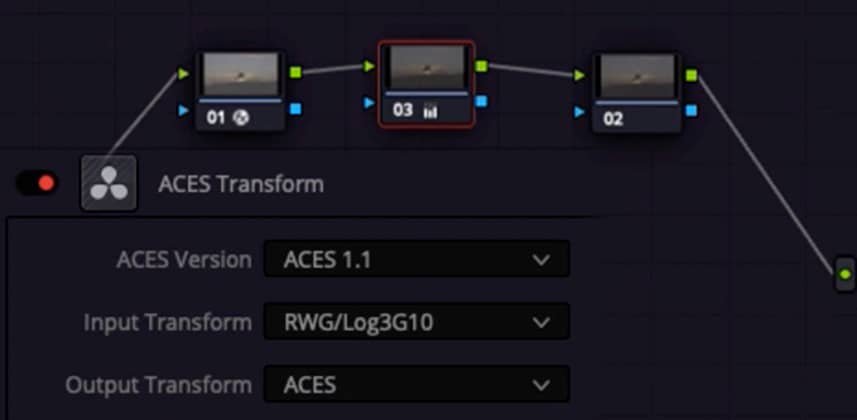| Series |
|---|
Custom ACES Grading With Fixed Node Structures
In Part 1 of this series – you learned why I like to skip setting up project-level ACES color management, and instead build the ACES pipeline myself in the node tree. This workflow opens up lots of exciting possibilities!
In this Insight, I’m going to expand on the custom ACES workflow by combining it with one of my other favorite techniques – a pre-built, fixed node structure. I’ll also show you some practical examples, using my fixed node tree to solve real-world grading problems.
If you aren’t familiar with fixed node structures and the workflow benefits they bring, check out my previous series on fixed node trees.
Practical uses of a custom ACES node tree
In the video I’ll walk you through the node structure that I use, and you can:
- Tag clips for different input colorspaces in custom ACES
- Use colorspace transforms to dial in film grain for various formats
- Use formats that don’t have ACES IDTs
- Recover Highlights
- Do paint/repair work in camera space
- Get great qualifiers while still grading in ACES
- Fix saturation problems that normally are difficult in ACES
- Adjust node colorspaces for control feel and preferences
So if you can’t tell – this one is pretty jam-packed. I’ve also included a download of my node structure, so you can get started with this workflow yourself. As always – leave any questions or comments below, I would love to hear how other people feel about this workflow after trying it!
joey
Member Content
Sorry... the rest of this content is for members only. You'll need to login or Join Now to continue (we hope you do!).
Need more information about our memberships? Click to learn more.
Membership optionsMember Login
Additional Downloads
Sorry... downloads are available for Premium Members only.
Become a Premium Member

